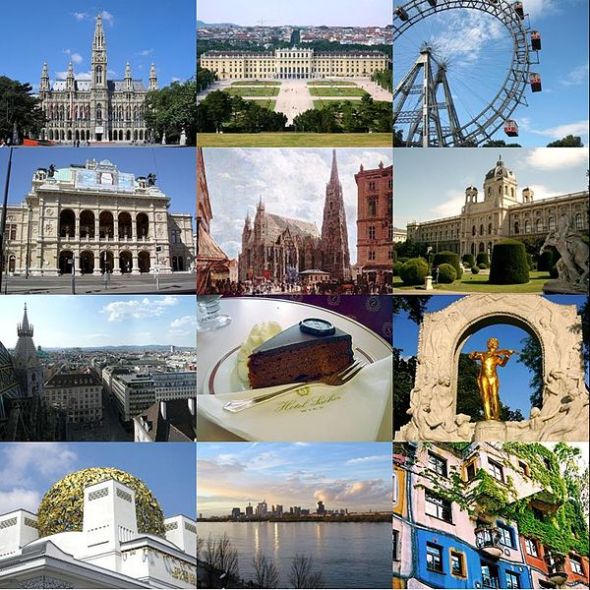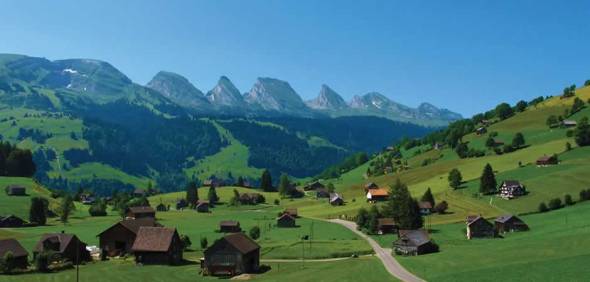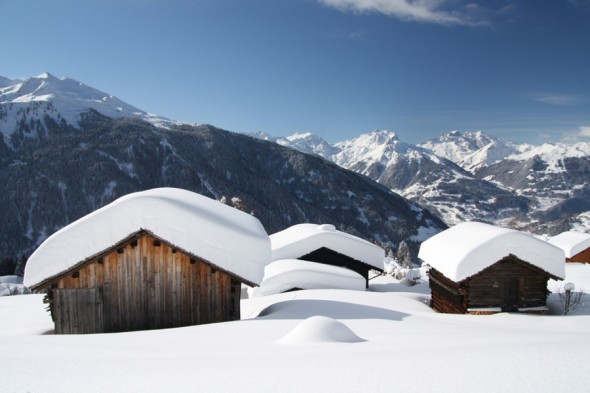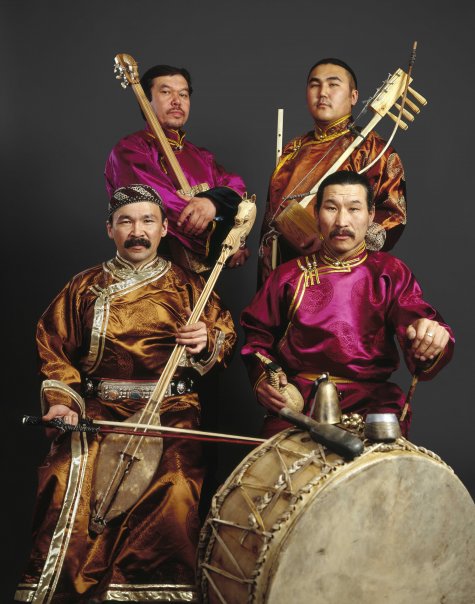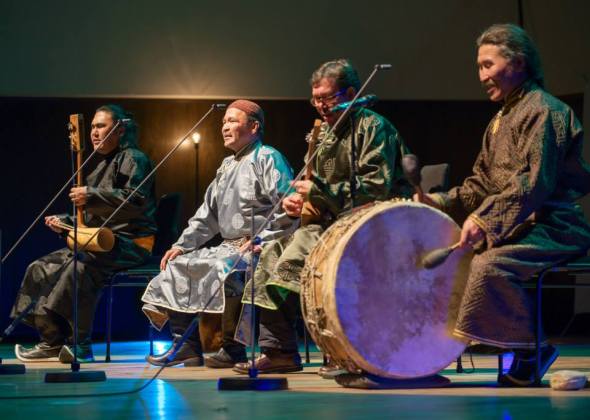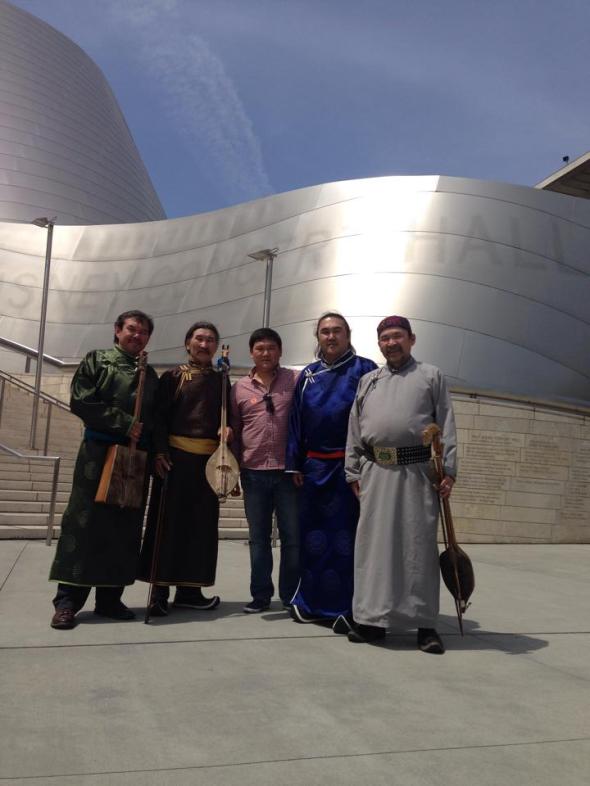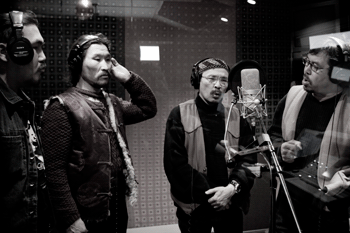Huun-Huur-Tu European tour 2014

22.05.2014 WIEN / Austria
Venue: Sargfabrik (Venue phone: +43 1 98898111)
Time: 20:00 h
24.05.2014 NİCE/France
Venue:SALLE S.GRAPPELLI – CEDAC DE CIMIEZ
Time: 20:00 h
26.05.2014 OFFENBURG/Germany
Venue:Spitalkeller
Time: 20:00 h
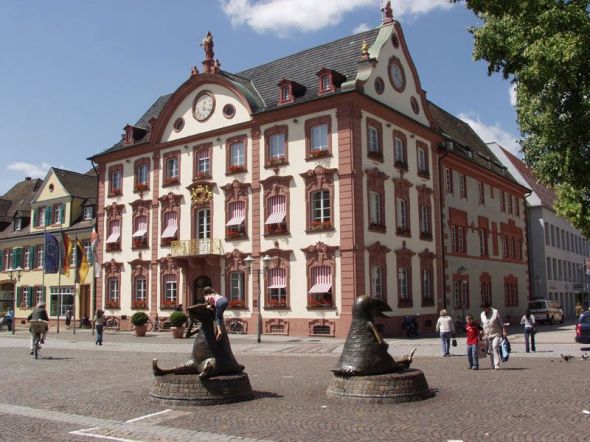
27.05.2014 ZÜRİCH/Switzerland
Venue:Haus Appenzell
Time: 20:00 h Der Abend ist eine geschlossene Veranstaltung und es sind keine Eintrittskarten erhältlich
28.05.2014 SCHAAN/Liechtenstein
Venue:TAK
Time: 20:00 h
30.05.2014 TOGGENBURG/Switzerland
Venue:KlangWelt Festival http://www.klangwelten.com/festival/
04.07.2014 MONTAFON/Austria
Venue:Montafoner Sommer 2014
Huun-Huur-Tu’s Style
Huun-Huur-Tu’s style could be best described as profoundly mysterious. This comes as a consequence of their traditional, ritual laryngeal chants descending from Central Asian land of Tuva. This unique song technique reside on developing an enthralling sound cosmos rich in undertones and overtones.
The members of Huun-Huur-Tu have devoted themselves to learning oId songs and tunes, but at the same time their performances reflect the values of globalization. The whistling of the high-mountain wind forms eerie overtones and postmodern statement. The repeated thrum of a string against wood and hide turns into a meditative, evocative figure straight from the avant-garde. The descendants of isolated Siberian herdsmen make serious, strangely universal music out of some of the planets quirkiest acoustics.
The Tuvan acoustic quartet Huun Huur Tu prove that Tuvan music can take plenty of intelligent innovation. Using traditional instruments and drawing subtly on 20th-century composers, Huun Huur Tu transform ancient songs into complex acoustic compositions.
see more:http://www.jaro.de/artists/huun-huur-tu/
THE STORY BEHİND ANCESTORS CALL
ANCESTORS
The Ene-Sai (ancient name of the Yene sei River), Sayan(mountains), and Tandim(mountains) are our ancient places.
The soft and soulful “sygyt” and “khöömei” are the ancient song of our people .
The ancestors of our “kargyraa” long ago became like gravestones on the steppe.
But among us are still people who sing kargyraa.
The ancestor of khöömei and sygyt long ago became like gravestones on the steppe.
But our hearts are proud(boil in our chest) that among us are still people who sing khöömei.
HUUN-HUUR-TU / US tour, spring 2014
Friday 04/25/2014
Cambridge, MA
First Congregational Church
11 Garden Street
Show: 8:00PM
Tix: 28
From the independent republic of Tuva, bordering Mongolia, Huun Huur Tu performs an ear-twisting vocal technique called Khöömei. In this style, a single vocalist produces two or three notes simultaneously, often a low drone along with a high-pitched whistle. Accompanied by traditional string and percussion instruments, the four-member ensemble sings rhythmic songs that capture the magic of the Siberian steppe.
see more :http://www.worldmusic.org/content/event_page/1902
HUUN-HUUR-TU / US tour, spring 2014
HUUN-HUUR-TU
US tour, spring 2014
April 11 – Dearborn, MI
April 12 – Batavia, IL
April 13 – Cedar Rapids, IA
April 16 – Phoenix, AZ
April 17 – Folsom, CA
April 19 – Los Angeles, CA
April 20 – Portland, OR
April 23 – New York City
April 25 – Cambridge, MA
The Story behind Orphan’s Lament
In Tuvan folklore, the orphan is a key figure who shows the central importance of love and family relationships. Deprived of parents, orphans are considered the unluckiest of humans, even if they own lots of animals and have plenty of money.
THE ORPHAN’S LAMENT
I’m alone, I’m an orphan If I’d died as a baby.
If as a baby I’d died It wouldn’t have been such a misfortune
I’m alone, I’m an orphan
If I’d died as a newborn in the cradle
If as a newborn in the cradle I’d died
No one would have needed my thickened blood (placenta)
[i.e., it would have been better to have been aborted
than to have had such an unfortunate life]
We feel pity for a tiny bird
That tumbles from a broken nest
We feel pity for a baby
Who has lost his mother
The fate of the universe Can’t be held back
Even if my dying mother stood up and came to me
She wouldn’t add to my happiness
THE ORPHAN’S LAMENT
Kaigal-igil, vocal
Anatoli: byzaanchi
Sayan: marinhuur
CHIRAA-KHOOR ” The Yellow Trotter “
The Yellow Trotter
In the middle of the yellow steppe,
Chiraa-Khoor
We rest underneath a lone birch tree,
Chiraa-Khoor
The cool wind brings the aroma of juniper,
Chiraa-Khoor
I’am a traveler, and my spirit is joyful,
Chiraa-Khoor
An orphan who herded sheep on lands belonging to a certain feudal lord (noyon) had nothing except Chiraa-Khoor, his beautiful, strong and fast horse.
The noyon grew jealous of the horse and wanted to take it away. The orphan herder fled to others lands, and in this song, describes his journey. He began in the upper regions of the Khemchik River, in Bai-Taiga, and fled towards Tandi. As he travels along, he gives his own poetic names to the natural sights along the way.
2008 – Mother-Earth! Father-Sky!
 01 4:21 Mezhegey
01 4:21 Mezhegey
02 3:00 Daglarym
03 4:33 Ergim Syaryym («Song of Hope»)
04 5:43 Artyy Sayir
05 6:27 Erge Chokka («Unneeded»)
06 6:02 Dembildey («Nomad Dance»)
07 6:28 Chashpy-Hem («Chashpy River»)
08 3:56 Ovyur Hadyp
09 4:22 Bai-Taiga
PERFORMANCE SCHEDULE OVERVIEW:
PERFORMANCE SCHEDULE OVERVIEW:http://eyefortalent.com/index.cfm/fuseaction/artist.performance_schedule/artist_id/33/y
CONCERT BOOKING & TECH RIDER
22.05.2014 Wien Sargfabrik Austria
24.05.2014 Nice tba France
26.05.2014 Offenburg Spitalkeller Germany
27.05.2014 Zürich Haus Appenzell Switzerland
28.05.2014 Schaan TAK Liechtenstein
30.05.2014 Toggenburg KlangWelt Festival Switzerland
04.07.2014 Montafon Montafoner Sommer 2014 Austria
read more…http://www.jaro.de/agency-concert-booking-tech-rider/huun-huur-tu/
Archaic voice wonder from Tuva
In 1992, Huun-Huur-Tu was founded by Sasha Bapa, his brother, Sayan, and two other musicians, Kaigal-ool Khovalyg and Albert Kuvezin. Ever since they have tried to focus on the performance of “old and forgotten songs”, as Sasha put it. Sasha, Sayan, and Kaigal-ool were refugees of one of the large state-managed song and dance ensembles that became fixed institutions of the public cultural life during the Soviet era. For decades these ensembles with their glitzy performances of folk music or pseudo folk music offered the only possibility for young musicians to play indigenous music for a living. Throughout the privatization of the music business in the former Soviet Union, many musicians decided to abandon these state ensembles and form their own groups. The musical results have decidedly been mixed.
In an interview for the American producer and critic, Ted Levin, Sasha Bapa explained the meaning of ‘Huun-Huur-Tu’ as the vertical separation of light rays that one often see out on the grasslands just after sunrise or just before sunset. It seems to be a metaphor for the band’s key element– throat-singing that “consists of producing a deep tone in such a way as to create one or two substantial harmonics. The first harmonic is a humming sound in the mid-range, and on top is a loud whistling tone that the singer raises and lowers to create a weird sort of melody by varying the embouchure” (Jon Sobel, Blogcritics Magazine). In this light and through their heavy touring, Huur-Tu can truly be seen as a leading force in popularizing throat singing or khöömei the past decades.
However rooted in Tuvan traditions, it would be a mistake to attribute Huun-Huur-Tu to a folk ensemble. For the first time, Huun-Huur-Tu laced in the pop charts with a remix of the title “Eki Attar”. It became Greece’s No.1 hit in the summer of 2002. The ensemble then went on to release a studio project entitled ‘Spirits of Tuva’ with Djs of various nationalities. They have performed with Ry Cooder, Frank Zappa, The Chieftains, Johnny “Guitar” Watson, Kronos Quartet and L. Shankar among the others. The ensemble’s collaborations do also include other members of JARO: Hazmat Modine, The Bulgarian Voices– Angelite, and Moscow Art Trio.
Huun-Huur-Tu’s Style
Huun-Huur-Tu’s style could be best described as profoundly mysterious. This comes as a consequence of their traditional, ritual laryngeal chants descending from Central Asian land of Tuva. This unique song technique reside on developing an enthralling sound cosmos rich in undertones and overtones.
The members of Huun-Huur-Tu have devoted themselves to learning oId songs and tunes, but at the same time their performances reflect the values of globalization. The whistling of the high-mountain wind forms eerie overtones and postmodern statement. The repeated thrum of a string against wood and hide turns into a meditative, evocative figure straight from the avant-garde. The descendants of isolated Siberian herdsmen make serious, strangely universal music out of some of the planets quirkiest acoustics.
The Tuvan acoustic quartet Huun Huur Tu prove that Tuvan music can take plenty of intelligent innovation. Using traditional instruments and drawing subtly on 20th-century composers, Huun Huur Tu transform ancient songs into complex acoustic compositions.
Huun-Huur-Tu’s Performance
As they began touring in the West, Huun Huur Tu almost single-handedly introduced the outside world to the boundless wealth of Tuvan traditions, thanks in great part to their superior musicianship. Hailing from the high pastures of the Altai Mountains in south central Siberia, the musicians have spent decades honing the overtone singing, instrumental approaches, and vibrant songs of their home.
Steeped in Tuvan folklore, the ensemble wears traditional garb and accompanies themselves on string and percussion instruments, playing galloping rhythms that evoke the vast south Siberian steppe. Their tightly structured pieces often imitate natural sounds, so that a song can be a literal representation of a Tuvan landscape.
Jon Sobel of the Blogcritics Magazine characterized the ensemble’s live performance as: “[…] the music is as warmly human as any folk style, and it’s not all khoomei. The four men have six or seven very distinct singing voices among them. Accompanying themselves on plucked and bowed stringed instruments, percussion, and jaw harps, they emulate biological rhythms in song: heartbeats, breathing, a brain drifting in dreamland, and not least (for a nomadic people), a horse’s trot. The songs are about romantic love, love of place, and (not least) horses, with moods that range from lyrical and thoughtful to joyful, humorous and danceable.” In this sense, the San Francisco Bay Guardian concluded that the Tuvan show: “will ride into your brain and leave hoof-prints up and down your spine.”
read more…http://www.jaro.de/artists/huun-huur-tu/
Documentary film about Tuva from series “Happy people” with English subtitles. May 15th, 16.00 Helsinki
Documentary film about Tuva from series “Happy people”.
Producer: Dmitry Vasyukov
Director: Mikhail Barynin
Camera: Semen Amanatov
Composer: Radik Tyulyush
The documentary was screened in Moscow in January, 2014. Filming supported by the Russian Geographical Society.
Spectacular landscapes filmed in the different seasons. Traditional cultures: reindeer herders in Tozhu, Russian orthodox old-believers in Kaa-Khem province and the steppe nomads-cattlebreeders.
The composer Radik Tyulyush will give an intro to the documentary.
Free admission.
Radik Tyulyush solo concert in Helsinki
Radik Tyulyush of Huun Huur Tu will have a solo concert in Helsinki, May 16th in the Russian science and culture centre. Starts at 17.00
Radik Tyulyush is a musician from The Republic of Tyva. As a member of two well-known world music bands Yat-Kha (2000 – 2004) and Huun Huur Tu (2006 – present), he has toured around the world. Along side with work in Huun Huur Tu, he develops the other projects. He released a solo album Chalama in 2013.
Radik’s latest key performances include WOMAD (Huun Huur Tu) and WOMEX (solo) in 2013.
The new documentary film about Tuva will be shown on May 15th, 16.00 at the same place. The film shows the lifestyle of Tozhu reindeer herders, Kaa-Khem region’s Russian orthodox old-believers and nomads-cattlebreeders of the steppe.
Tickets: 10 euros at the door. Free admission for kids under 10 years age.
KHÖÖMEI WORKSHOP by Radik Tyulyush
will take place in Karjalohja, May 17 — May 18th.
Gökyüzünü bulutların sardığı zamanlarda bulutların arasından sızan gün ışığı HUUN-HUUR-TU
Gökyüzünü bulutların sardığı zamanlarda bulutların arasından sızan gün ışığı HUUN-HUUR-TU
İlhamlarını Asya Türk kültüründen, Şamanizmin derin derin hissedişinden, doğa sevgisinden, insan sevgisinden alan ve New York Times’ın “Müziğin mucizesi” olarak tanımladığı dünyaca ünlü Huun Huur Tu müzik topluluğu Türkiye’de.
GRUBUN İSMİ NEREDEN GELİYOR?
Farklı bir tarz olsun istedik güneş gibi vursun, çarpsın anlamında. Gökyüzünü bulutların sardığı zamanlarda bulutların arasından sızan gün ışığı demek.
Daha önce dünyaca ünlü Frank Zappa, The Cheieftains, Guitar gibi gruplarla çalışmalarda bulundunuz, Türkiye’den kimlerle çalışmak isterdiniz?
Tam olarak ünlü müzisyenlerinizi tanımıyoruz, bu konuda bilgi alıp eğer o müzisyenler de isterlerse Türkiye’de de çalışmalar yapmak isteriz.
1997’de Türkiye’de bulunduğunuzda Bulgar grubu Angelite ile konser verdiğinizde, o zamanki Türkiye ile şimdiki Türkiye arasında bir fark görüyor musunuz?
Daha önce İstanbul’a geldik, şu an ilk defa Anadolu’ya geliyoruz. Bir karşılaştırma yapmamız oldukça güç.
Şarkılarınızın ana teması genelde hikâye odaklı, mesela chira khoor (cırra hor) şarkısında kocası kendisinin kol ve ayaklarını kestiğinde kendi kendini iyileştiren altın prenses Aldyn (dangynal)’ın hikayesinden söz eder.
Bu hikâyelerin ve şarkıların ilham noktası nedir?
Ortaya çıkış serüveninden bahseder misiniz?
Bu şarkıları biz tarih boyunca, hayat boyunca gezerek, Tuva da ve Moğolistan’da yaşayan halk hikâyelerinden çıkarıyoruz. Dilden dile yayılarak günümüze ulaşmış mistik hikâyeler.
NEDEN GELENEKSEL ÇALGI ALETLERİ KULLANIYORSUNUZ?
Bunları aletleri öğrenme süreciniz aileden mi geliyor yoksa müzikle uğraşmaya başladığınızda mı merak sardınız?
Bunlar bizim geleneksel aletlerimiz, babadan aileden gelmiştir. İlk öğrenme sürecimiz gelenekten ve ailemizden gelmektedir. Ayrıca bazı çalgı aletlerini grubumuzdan Alexsey Saurıglar yapıyor.
Müzik hayatınızdaki en büyük başarınız olarak tanımladığınız olay neydi?
Sahneye çıkışımız, böyle farklı bir müzik yapmış olmamız bir başarıdır. Bizim için de seyirciler için de birer hatıra oluyor. Yaptığımız çalışmalar hayatlarımızdan bir sahnedir. Halk yaptığımız müziği seviyorsa biz devam ederiz.
Favori şarkılarınız arasında en çok sevilen fly fly my sandess,orai la boldula gibi parçalar sizce neden bu kadar sevildi?
Halk bu şarkıları belki daha iyi hissediyor olabilir. Kelimelerin anlamlarını bilmeseler bile duyguları bu şarkıları sevmelerini sağlıyor.
Albüm isimleriniz; “Sürümde 60 atım var”, “Bir kartal olarak doğmuş olsaydım eğer” gibi geleneksel bir grup olduğunu çağrıştırıyor, geleneklerinizi özellikle vurgulamak için mi bu isimleri seçtiniz?
Elbette ki, ayrıca daha ayırt edici olsun, anlamları derin olsun diye bu tür isimler seçiyoruz.
9-Kayseriyi nasıl buldunuz?
Dağlar gözümüze çarptı ve muhteşemdi, burada kendimizi evimizde gibi hissettik. Tuva’dan, Sayan dağlarından çıkan Türklerin, neden buraya dağlık bölgeye geldiklerini anlıyoruz, öz ataları da dağlarda yaşamışlardı
10-Müziklerinizdeki ilham kaynağı nedir?
Bizim memleketimiz, dağlarımız, kültürümüz en büyük ilham kaynağımız. Amerikalı etnik müzik yapan bir müzisyen etnik müziği şöyle tanımlar; bizim yaptığımız müzik temel oluşturur. Bu şarkıları dinlerken dinleyicinin gözünün önünde resim çizer, o bölgelere gitmeyen kişi bu müzikleri dinleyip gözünde canlandırabiliyor. Bizim ilham kaynağımızın çıkış noktası da tam olarak, tabiatla insanın karşılaşması macerasını ve sevgisinin mesajını veriyoruz müziklerimizde, tabiat ve insan sevgisini buluşturuyoruz.
http://www.internethaber.com/muzigin-mucizesi-turkiyede-517756h.htm
Концерт группы Huun Huur Tu, Concert group Huun Huur Tu – 8 апреля, вторник
8 апреля, вторник
Начало в 20.00
Вход: 700 руб., студентам: 600 руб.
Тувинская группа Хуун-Хуур-Ту на протяжении многих лет является, безусловно, самым известным в мире музыкальным проектом всего бывшего СССР (не считая исполнителей классической музыки и поп-дуэта “Тату”).
Музыка Хуун-Хуур-Ту – уникальная, магическая, вобравшая в себя все наследие тувинского фольклора, традиции горлового пения, и развивающая это наследие. Группа прочно входит в элиту world music планеты. С 1993 года группа выступила практически на всех крупнейших фестивалях world music, джаза и даже рок-музыки, дала около тысячи концертов на всех континентах, совершила 16 концертных туров по США и Канаде, множество раз выступала во всех странах Европы, Японии, Австралии, Мексике, Гонконге, Сингапуре, Малайзии. В мире пользуются популярностью 9 альбомов группы, а также более десятка совместных работ
Хуун-Хуур-Ту с другими музыкантами. Группа записывалась и выступала с выдающимися музыкантами самых различных жанров, такими как Stevie Wonder, Frank Zappa, Ry Cooder, Kronos Quartet, Mickey Heart and Bob Weir (Greatful Dead), Johnny “Guitar”Watson, Shankar, Trilok Gurtu, Fun-Da-Mental, Bulgarian Voices Angelite и др.
Во всех известных музыкальных энциклопедиях Хуун-Хуур-Ту называется самым выдающимся музыкальным явлением России за последнее десятилетие.
В 2012 году группа номинирована на BBC World Music Award – самую престижную в мире ежегодную награду в сфере этно-музыки.
Zvuki.ru о юбилейном концерте Хуун Хуур Ту:
“Они не делали тайны или шоу из своего появления: прошли при полном освещении на свои места, одетые в красивые однотонные халаты и с необычными инструментами в руках. Однако начало выступления обрушилось на слушателей в один миг, отрезая все, что было раньше, и все, что было вокруг. В одну секунду свет погас, а четверо музыкантов, закрыв глаза, с силой запели “Молитву”, или “Prayer”, как она обычно называется на дисках ХХТ. Эта вещь исполняется а-капелла, только четыре странных потока звука, в которых не сразу узнается человеческий голос. Это было похоже на мгновенное перемещение во времени и пространстве. Хуун-Хуур-Ту вбросили нас, слушателей, в свой мир, и там уже принялись за нас основательно.
Весь секрет ХХТ – вовсе не в том, что они исполняют “этническую музыку” и занимаются горловым пением. Чепарухин сказал перед концертом, что группа пытается не только возрождать национальную музыку, но и развивать ее естественным для нее образом. Он был абсолютно прав. Музыка ХХТ живая; невероятно живым было и их выступление. Оно одновременно очень странно, очень непривычно: эти голоса, эти инструменты, которые так безыскусно и так плавно гудят и поют, их музыка, гипнотически повторяющаяся, как бесконечные повороты колеса едущей по степи телеги, с ритмичной поступью коня, с такими простыми и чистыми эмоциями, от каких мы давно отвыкли. Все шоу очень естественно, и в этом – особая заслуга ХХТ. Они – не ботаники, выкладывающие перед нами засушенные листки из музыкального гербария; они не актеры, изображающие из себя давно мертвых персонажей. В них не чувствуется и бездумного отрицания текущей даты на календаре; они принимают и понимают, что время изменилось. Однако при всем том они ухитряются сохранить абсолютно живой (и не обезображенной) многовековую музыкальную традицию и позволить слушателю разделить эту другую жизнь, прикоснуться к ней – потому что искренне верят в нее сами. Это катарсис, честное слово.
В группе четыре человека, и каждый из них способен один составить целое шоу. Алексей Сарыглар отвечает за ударные, которые, кстати, изготавливает для себя сам. Поразительно, какие сложные и богатые ритмы можно извлечь из одного большого барабана с несколькими дополнительными приспособлениями вроде “репродуктивных органов быка с овечьими косточками внутри” (цит. А. Чепарухин). Алексей, как и все члены группы, способен также играть на струнных и не хуже остальных владеет искусством горлового пения. Он создает основательное, солидное впечатление, какое и должен оставлять тот, кто заведует ритмом. Андрей Монгуш – самый молодой участник группы; в состав ХХТ он входит только полтора года. Тем не менее он, со своей скорее даже китайской, чем тувинской внешностью, управляется с целым рядом обязанностей: от простого поддержания ритма до сложных сольных номеров; на него возложена значительная часть вокальных партий, особенно дополнительных. По свидетельству его коллег, он также активно участвует в написании нового материала.
С аудиторией обычно общается Саян Бапа, один из двух оставшихся с самого начала основателей группы (вместе с Кайгал-Оолом Ховалыгом). У него очаровательный трудноуловимый акцент, и он предваряет каждую песню коротким емким пояснением (почти в каждой песне так или иначе поется о конях… на то тувинцы и кочевники). Основной его обязанностью, однако, является игра на струнном дошпулууре, и со своим обтянутым змеиной кожей инструментом он исполняет партии, изумляющие подчас своей сложностью.
Наконец, о Кайгал-Ооле Ховалыге Саян сказал, что тот для группы – старейшина. И Ховалыг, играющий большей частью на игиле (такой смычковый струнный), а также вместе с Андреем ведущий основную часть вокальных партий, действительно излучает несуетное, уверенное спокойствие, которое и должно исходить от старейшины – не столь важно, группы или рода.
Первую половину сета ХХТ в основном следовали трек-листу своего диска Live 1, не отклоняясь от него где-то до “Kongurey” и “Song of the Caravan Drivers”. Стоит с удовольствием отметить, что звук на концерте был просто идеальный, а сами музыканты воспроизводили студийные версии своих композиций точнее, чем способны это делать многие современные рок-музыканты. Ударную силу репертуара группы составляют бодрые среднетемповые номера в духе “Oske Cherde”; однако ХХТ умело разнообразили свою программу. Прозвучала и жемчужина их репертуара, меланхоличная “Kongurey”, где Саян отложил дошпулуур и взялся за гитару; и кое-что без аккомпанемента; и изящная баллада в сольном исполнении Андрея. Полтора часа (чуть меньше) выступления Хуун-Хуур-Ту пролетели не то, чтобы незаметно, но безо всякого напряжения для слушателя. Пару раз им подносили цветы, а в какой-то момент тувинский юноша-зритель даже сказал небольшую речь, путаясь в словах от волнения. Смеха это не вызвало – зал разделял его эмоции.”
Huun-Huur-Tu – Folk music groups
Huun-Huur-Tu (Tuvan: Хүн Хүртү Khün Khürtü, Russian: Хуун-Хуур-Ту) is a music group from Tuva, a Russian Federation republic situated on the Mongolian border.
The most distinctive characteristic of Huun Huur Tu’s music is throat singing, in which the singers sing both the note (drone) and the drone’s overtone(s), thus producing two or three notes simultaneously. The overtone may sound like a flute, whistle or bird, but is actually solely a product of the human voice.
The group primarily uses native Tuvan instruments such as the igil, khomus (Tuvan jaw harp), doshpuluur, and dünggür (shaman drum). However, in recent years, the group has begun to selectively incorporate western instruments, such as the guitar. While the thrust of Huun Huur Tu’s music is fundamentally indigenous Tuvan folk music, they also experiment with incorporating not only Western instruments, but electronic music as well.

